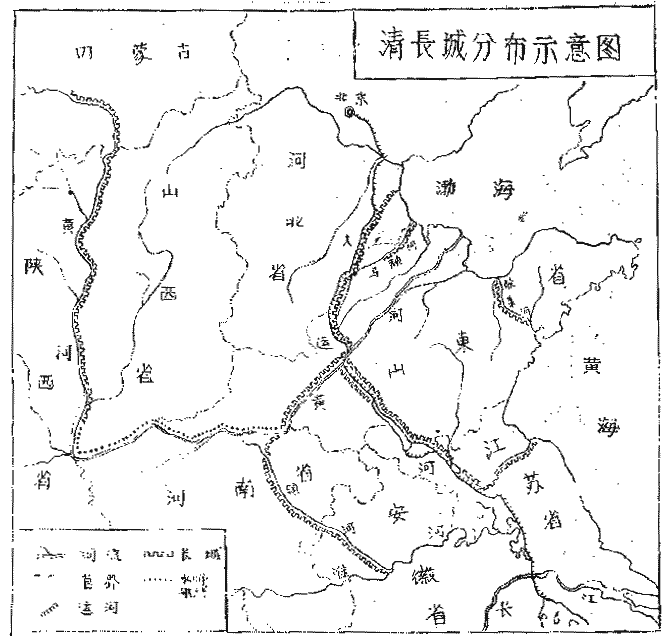Badaling Great Wall: The crystallization of the labor of the Chinese people
Introduction to the Badaling Great Wall
Before introducing the magnificent architectural marvel of the Badaling Great Wall, I would first like to pay tribute to the hardworking Chinese people who built this world-famous structure. Every time I stand at the foot of the Great Wall, I am struck by awe at its grandeur. Through this marvel, one can witness the indomitable spirit of the Chinese people’s relentless struggle and perseverance. Thousands of years ago, without modern machinery, it was an immense challenge to manually transport massive stones to construct such a wall. Closing my eyes, I envision the arduous labor of its construction.
folk legend
The legend of “Meng Jiangnü Weeping at the Great Wall” is widely circulated online. It recounts the story of Meng Jiangnü’s husband, who perished while building the Great Wall during the Qin Dynasty. Overwhelmed by grief, Meng Jiangnü traveled to the Great Wall and wept bitterly beneath it, her sorrow said to have moved heaven and earth. According to the tale, her tears caused a section of the Wall to collapse over 800 miles. Though this is merely a legend, it vividly illustrates the immense hardship and peril faced by the laborers who constructed the Great Wall.
Basic Information
The Badaling Great Wall is a Ming Dynasty section of the Great Wall located in Yanqing District, Beijing, China. It is the best-preserved and most representative segment of the Great Wall, listed as a UNESCO World Cultural Heritage Site and a national 5A scenic spot. Today, it serves as a landmark attraction, welcoming millions of visitors annually.
The Badaling Great Wall has been meticulously restored to preserve its original appearance. Its proximity to well-developed transportation networks makes it a top choice for travelers’ itineraries.
Location
The Badaling Great Wall is situated in northern Beijing, at the northern entrance of the ancient Guandu Road in Jundu Mountain, Yanqing District. Its coordinates are approximately 40°21′N latitude and 115°59′E longitude, approximately 70 kilometers from Beijing’s Tiananmen Square.
Transportation Options
High-Speed Rail: Beijing-Zhangjiakou High-Speed Railway (Line S2).
Public Transport: Buses No. 919 and 877.April 2025 update: Bus 877 has been moved from the original “Deshengmen” terminus to “Beitucheng Station Exit B”.
By Car: Jingli Expressway (Beijing-Zhangjiakou) or Jingzang Expressway (Beijing-Zhangjiakou).
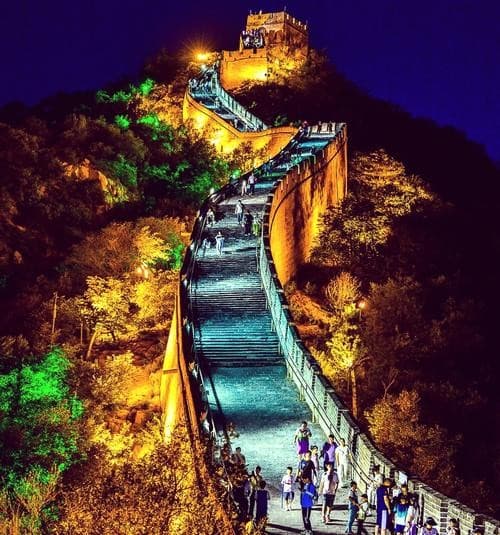
Operating Hours
April 1, 2025 – October 31, 2025: 6:30 AM – 4:30 PM
November 1, 2025 – February 28, 2026: 7:30 AM – 4:00 PM
Ticket Prices
April 1 – October 31, 2025: Adult tickets: ¥40/person.
November 1, 2025 – March 31, 2026: Adult tickets: ¥35/person.
Night Tour Tickets
Weekdays: ¥198/person.
Weekends/Holidays: ¥298/person.
Entrance Options
Main Entrance (Guan Cheng Gate)
Located in the central area of Badaling Guan Cheng, Most visitors enter here.
Take Bus No. 877 directly to Guan Cheng Parking Lot, then walk 10 minutes to the ticket gate.
Northern Section Entrance (Bear Land Entrance)
Located at the foot of the northern section.
Scooter Rental: ¥80 (one-way), ¥120 (round-trip).
Ideal for those seeking a less crowded experience or rollerblading adventure.
High-Speed Railway Station Walking Entrance
Located at the exit of Badaling Great Wall Station.
A 20-minute walk through an underground passage to the Main Entrance.
Suitable for visitors arriving by high-speed rail.
North Section Cable Car Entrance (North Line Express)
Near the Rolling Sky Gully Parking Lot.
The cable car ascends directly to the 7th floor of the northern section, with a short walk to the 8th floor (“Slope of the Good Man”).
Ticket Prices: ¥100 (one-way), ¥140 (round-trip).
Accessible via taxi or self-driving (15-minute walk from Badaling High-Speed Railway Station).
South Section Cable Car Entrance
Near Badaling High-Speed Railway Station.
The cable car leads to the 4th floor of the southern section, requiring a return walk to Guan Cheng.
Recommended for cultural exploration, not ideal for general tourists.
North Section Cable Car Entrance (North Line Express)
Near the Rolling Sky Gully Parking Lot.
The cable car ascends directly to the 7th floor of the northern section, with a short walk to the 8th floor (“Slope of the Good Man”).
Ticket Prices: ¥100 (one-way), ¥140 (round-trip).
Accessible via taxi or self-driving (15-minute walk from Badaling High-Speed Railway Station).
South Section Cable Car Entrance
Near Badaling High-Speed Railway Station.
The cable car leads to the 4th floor of the southern section, requiring a return walk to Guan Cheng.
Recommended for cultural exploration, not ideal for general tourists.
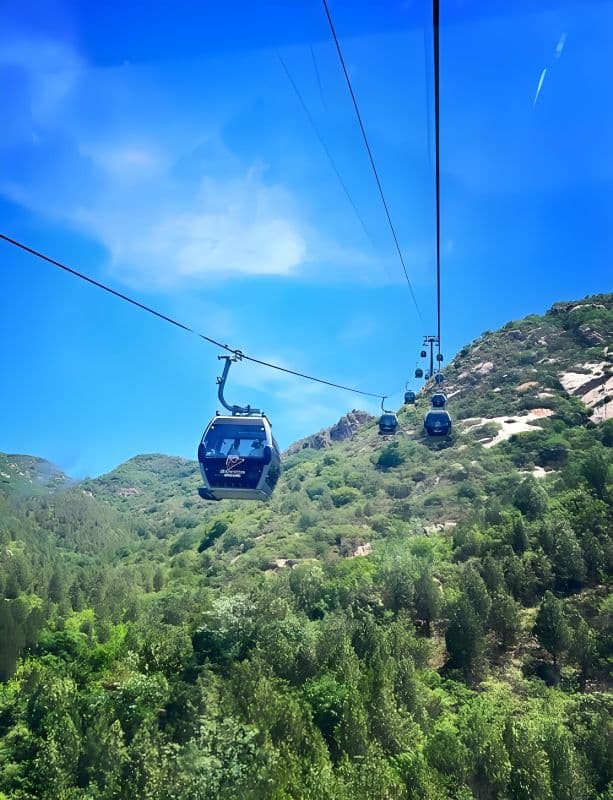
Scenic Spot Distribution
Southern Section of the Great Wall
The southern section spans approximately 1.3 kilometers, featuring gentle slopes and wide steps, making it ideal for tourists of average physical fitness or those traveling with elderly or children. Key attractions include:
South Fourth Tower: The highest point in the southern section, offering panoramic views of the northern section of the Great Wall.
South Seventh Tower: A well-preserved enemy tower retaining parts of its original structure.
Northern Section of the Great Wall
Stretching about 3.5 kilometers, the northern section is renowned for its steep slopes (e.g., the “Hao Han Slope” section nears 70 degrees), making it a challenging yet popular choice for most visitors. Highlights include:
North 8th Tower (Hao Han Slope): The highest point, where Mao Zedong’s inscription “It’s not a good man until he reaches the Great Wall” is displayed.
North Fourth Tower: Accessible via cable car, reducing the need for strenuous climbing.
North 12th Tower: The endpoint of the northern section, quieter and less crowded, ideal for in-depth exploration.
Guan Cheng (Central Area): The central hub dividing the northern and southern sections, Guan Cheng served as the core defense center of the Great Wall. It is a main gathering area for tourists, housing the ticket office, catering facilities, and a stone monument inscribed with Mao Zedong’s famous saying, “It’s not a good man until he reaches the Great Wall.”
Other Subsidiary Scenic Spots
The Great Wall Museum: Free entry, showcasing the history and cultural relics of the Great Wall.
Bear Paradise: Located near the northern section exit, offering bear watching (food must be purchased separately).
Dome Theater: Immersive films detailing the Great Wall’s construction history.
Other Subsidiary Scenic Spots
The Great Wall Museum: Free entry, showcasing the history and cultural relics of the Great Wall.
Bear Paradise: Located near the northern section exit, offering bear watching (food must be purchased separately).
Dome Theater: Immersive films detailing the Great Wall’s construction history.
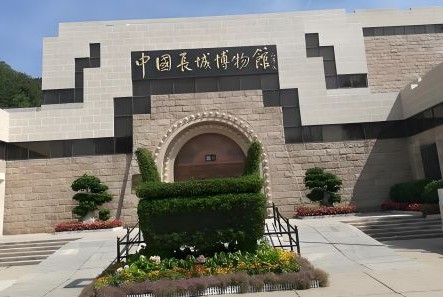
Architectural Style
Constructed with large square stones, the Great Wall features peepholes and archery slots. Enemy towers are spaced every few hundred meters, while beacon towers are built every 2-3 kilometers to monitor enemies and relay intelligence.
Famous People and the Great Wall
Wang Changling (Tang Dynasty):“When the moon is bright in Qin Dynasty, the people have not returned from the Long March of Ten Thousand Miles.”
Li Bai (Tang Dynasty):“The long wind blows over the Jade Gate Pass for tens of thousands of miles.”
Emperor Kangxi (Qing Dynasty):“The Great Wall is not a place for virtue, but for danger.”
Mao Zedong:“Those who have not reached the Great Wall are not true heroes. I have traveled 20,000 kilometers by flexing my fingers.”
Lao She (Writer):“It is like a living dragon running between the mountains.”
Richard Nixon (U.S. President):“Only a great nation can build such a great Wall.” (Stated during his 1972 China visit.)
Nelson Mandela (Former South African President):“In front of the Great Wall, I feel the eternal yearning of mankind for freedom.” (During his 1999 China visit.)
Hans Christian Andersen (Danish Writer):“It is like an epic poem in stone, inscribed with the resilience of the Eastern nations.” (From The Poet’s Market.)
Historical Development of the Great Wall
For those interested in the broader history of the Great Wall, here is an overview of its evolution:
Qin Great Wall (221–206 BC)
The Qin Great Wall was initiated in 214 BC during the reign of Qin Shi Huang (China’s first emperor). To defend against invasions by the Xiongnu tribes (nomadic groups from the north), Emperor Qin Shi Huang ordered his general Meng Tian to consolidate and extend existing walls from the Warring States period. The final structure stretched westward from Lintao (modern-day Gansu Province) to Liaodong (modern-day Liaoning Province), forming a continuous defensive barrier over 5,000 kilometers long. This marked the beginning of the Great Wall as a unified military infrastructure.
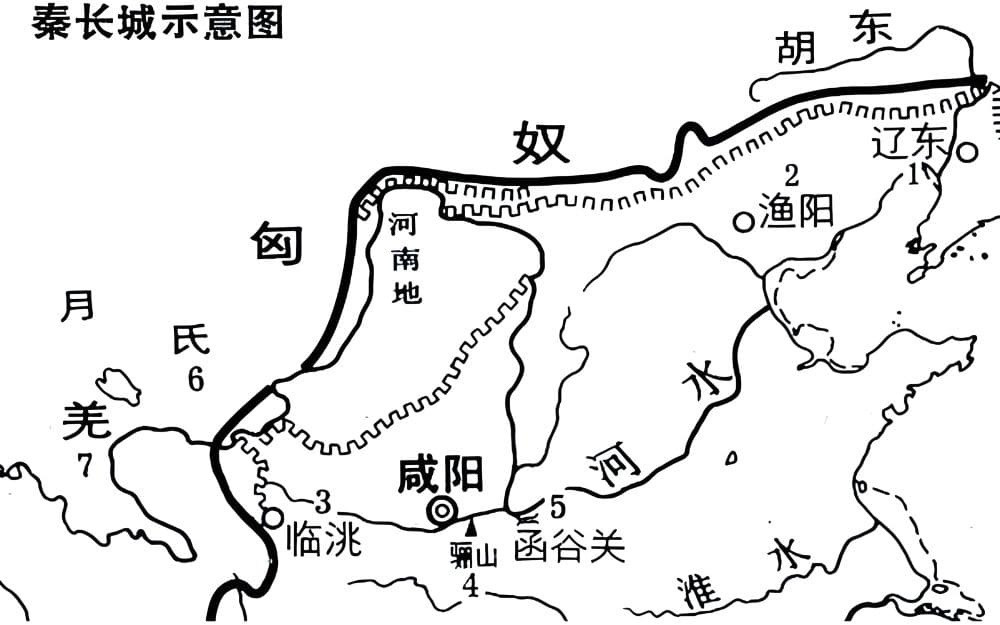
Han Dynasty Great Wall (206 BC–220 AD)
The Han Dynasty Great Wall was constructed during the mid-reign of Emperor Wu (around 127–104 BC) to counter the threat of the Xiongnu nomads. It extended westward from the Hexi Corridor (Gansu Province) to the northern Korean Peninsula, reaching as far as Lelang Commandery (modern-day Pyongyang, North Korea).
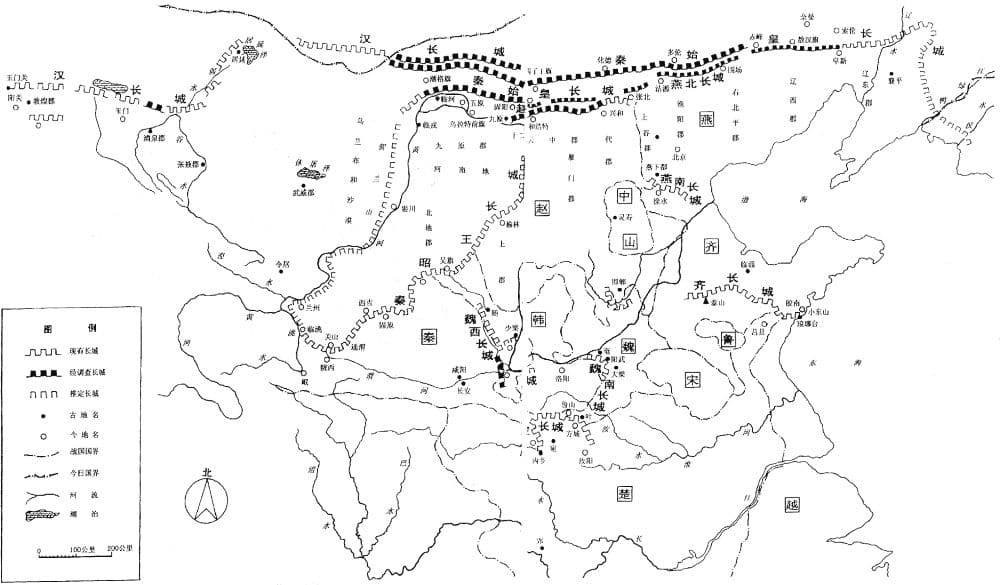
Northern Great Wall of Wei
The Northern Great Wall was built in the eighth year of Emperor Ming of Wei (423 AD) to prevent Turkic invasion.
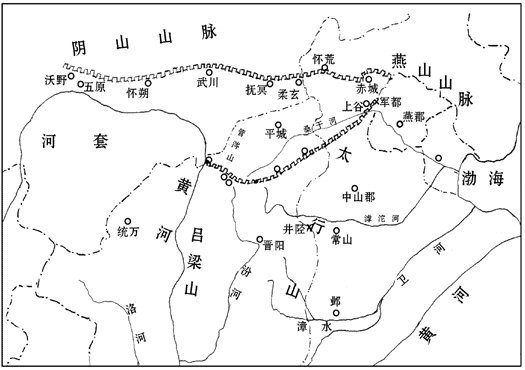
Sui Dynasty Great Wall (581–618 AD)
The Sui Dynasty initiated the construction of Great Wall during the reign of Emperor Yang (604–618 AD) to counter threats from the Turkic Khaganate (突厥汗国) in the north and the Tuyuhun (吐谷浑) in the northwest. Key features include:
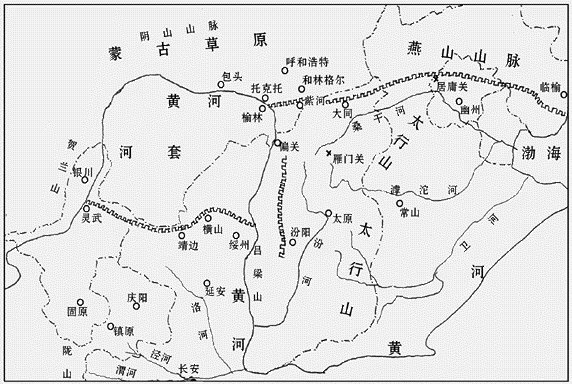
Song Great Wall
The Song Great Wall is located on the border between Laohekou in Hubei Province and Dengzhou City in Henan Province, and it is rumored to have been built by Yue Fei, the national hero who led its construction.
the Great Wall of the Jin dynasty (1115-1234)
The Jin Dynasty had two Great Walls: one was the Mingchang Great Wall, built during the fifth year of the Mingchang era (1194–1198), and the other was the Wushabao Great Wall, constructed between 1207 and 1211. Together, the two Great Walls total approximately 1,926 kilometers in length.
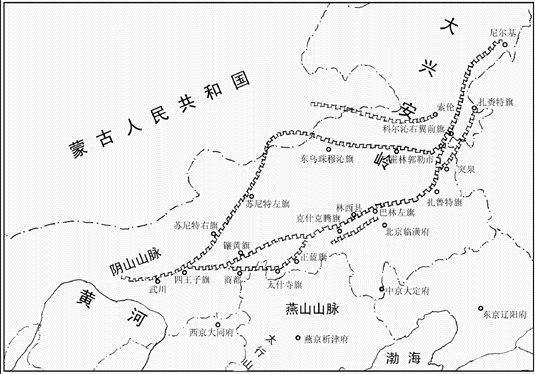
The Ming Great Wall
The Ming Great Wall stretches from Tiger Mountain in Liaoning Province, following the Yalu River in the east, to Juyongguan Pass in the west. It has a total length of 8,851.8 kilometers, of which 6,259.6 kilometers are comprised of artificial walls, while the remainder consists of trenches and natural barriers (Source: State Administration of Cultural Heritage and State Bureau of Surveying and Mapping, 2009).
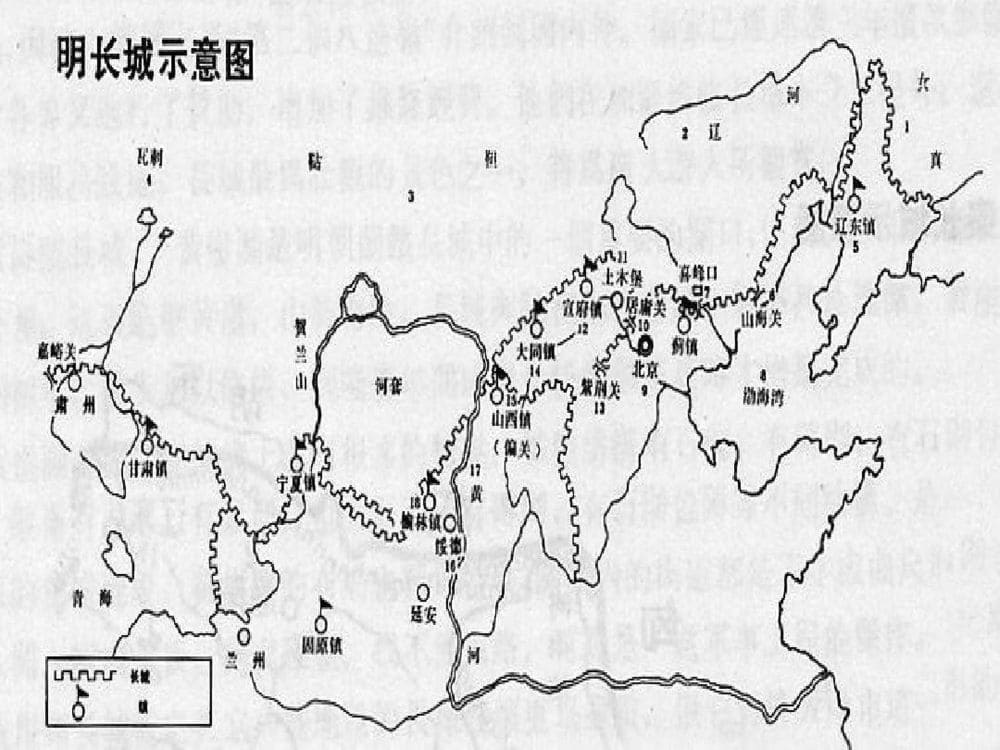
The Great Wall of the Qing Dynasty
Built to protect against Mongol invasion, it stretches from Liaoning in the south to Jilin in the north and from Shanhaiguan in the southwest.
